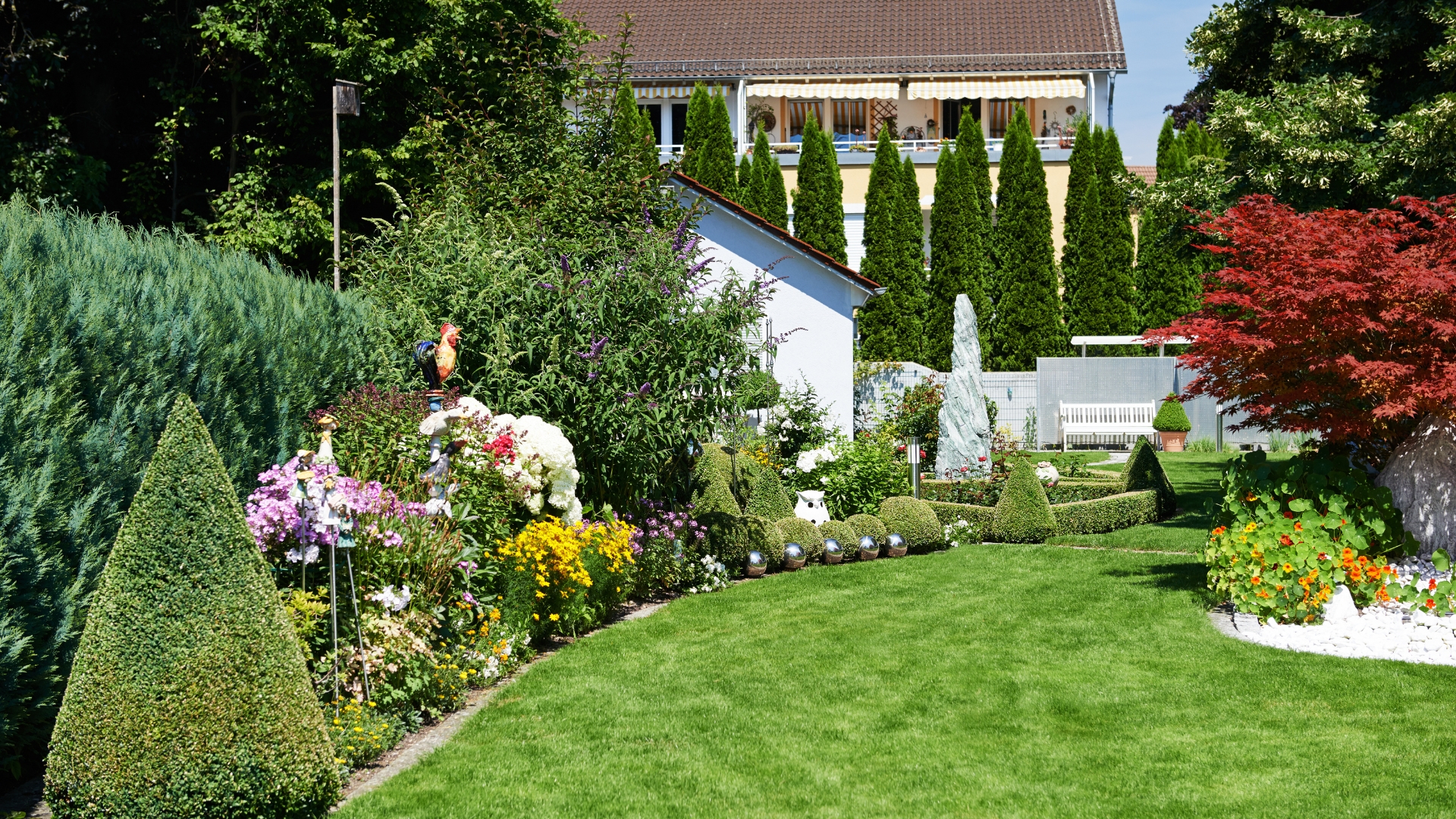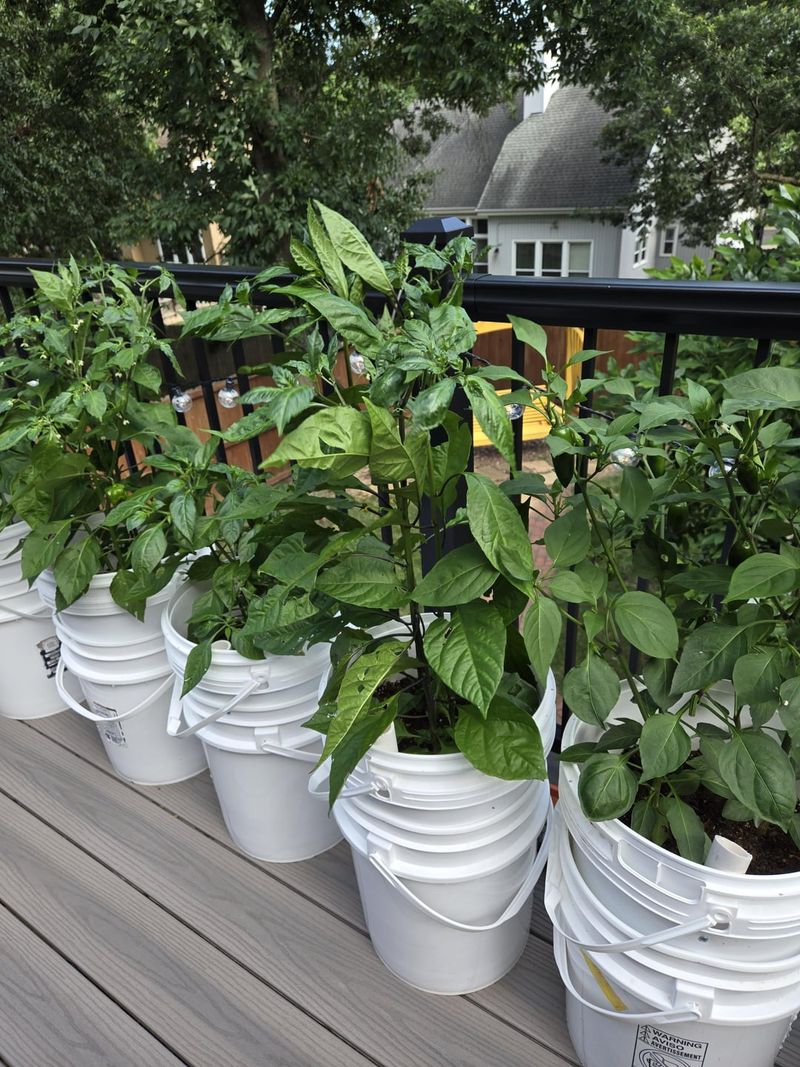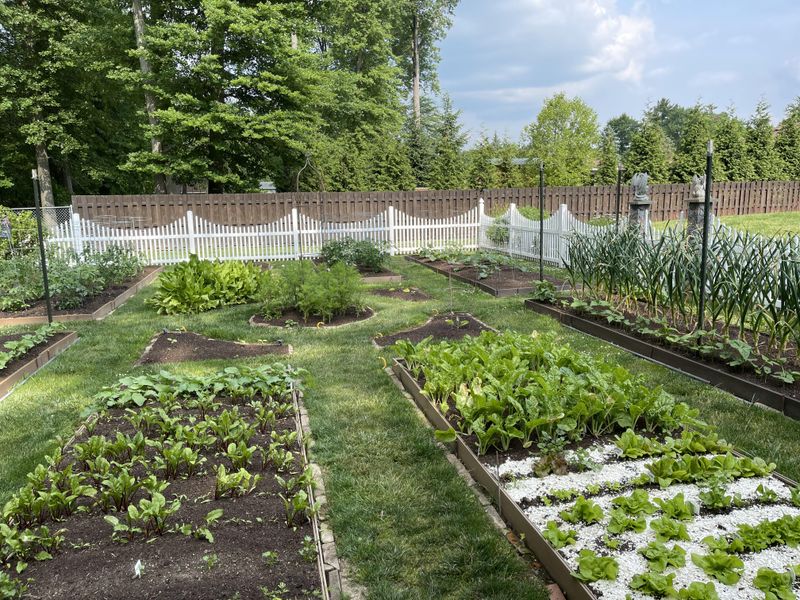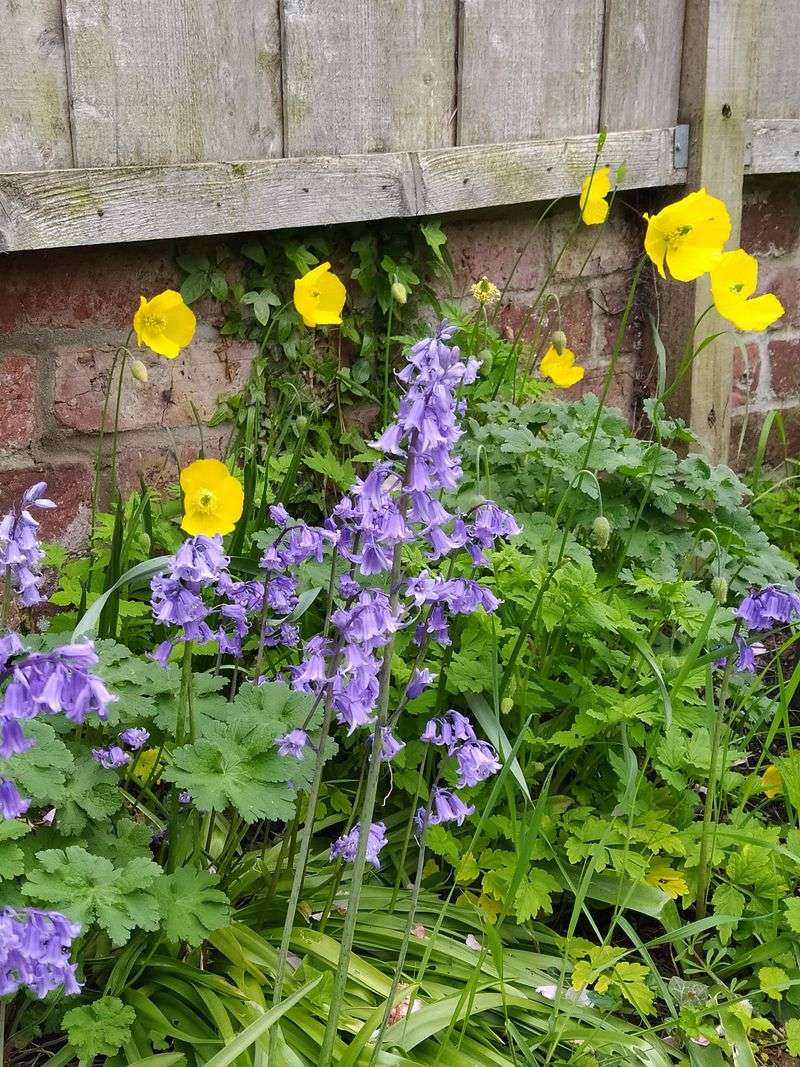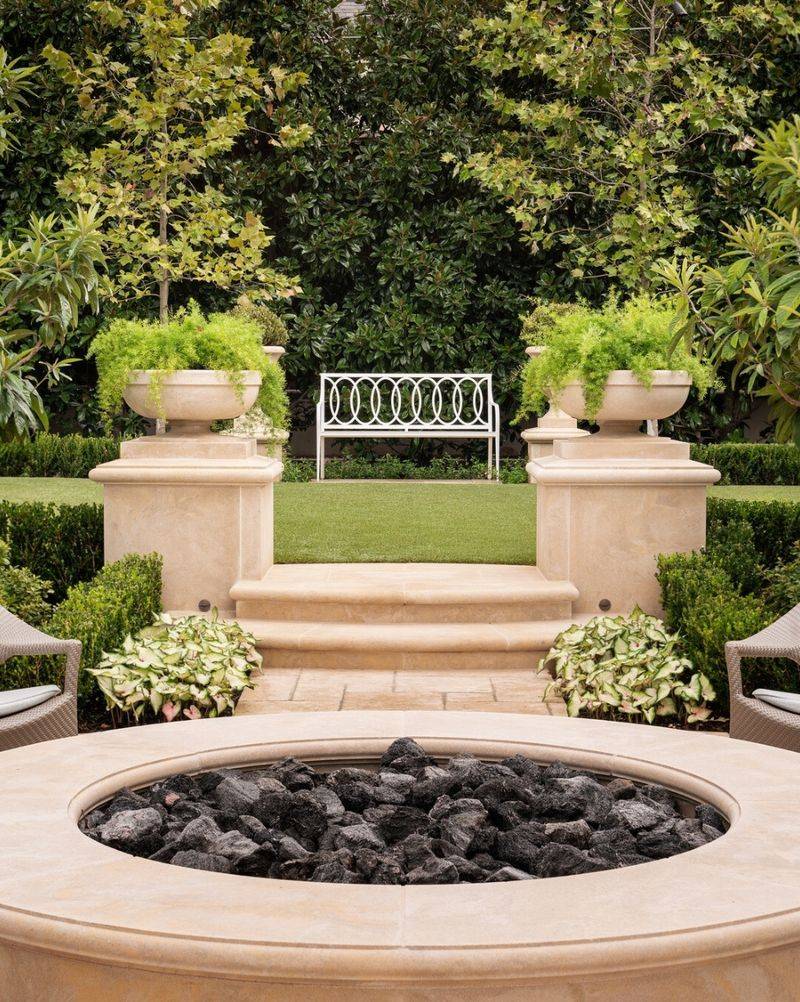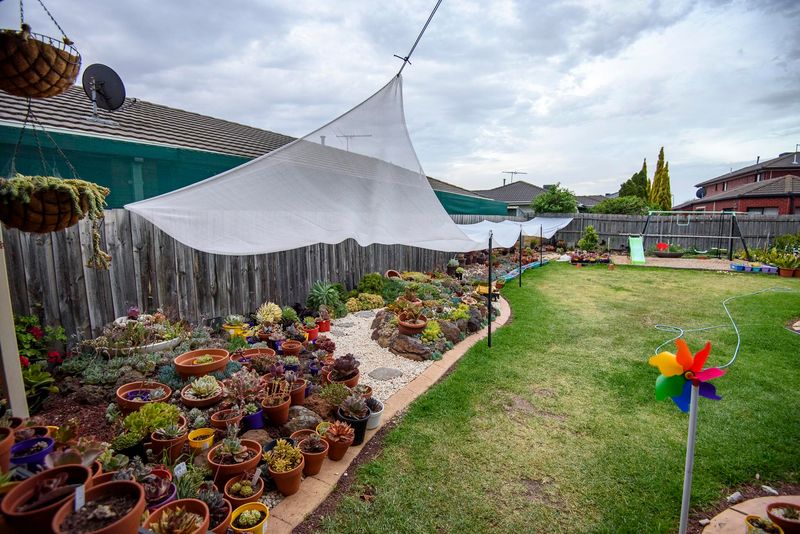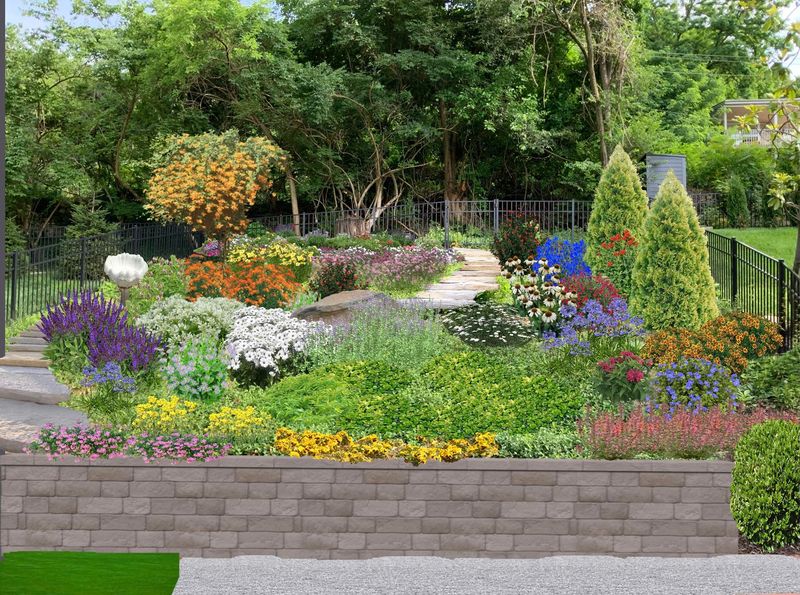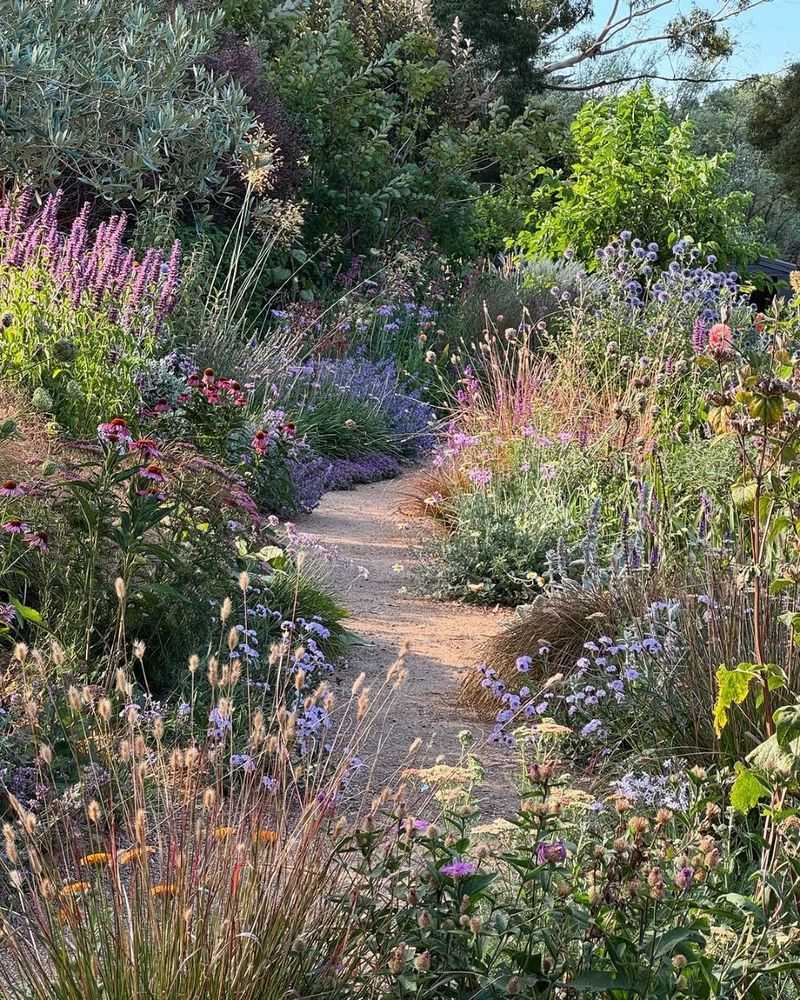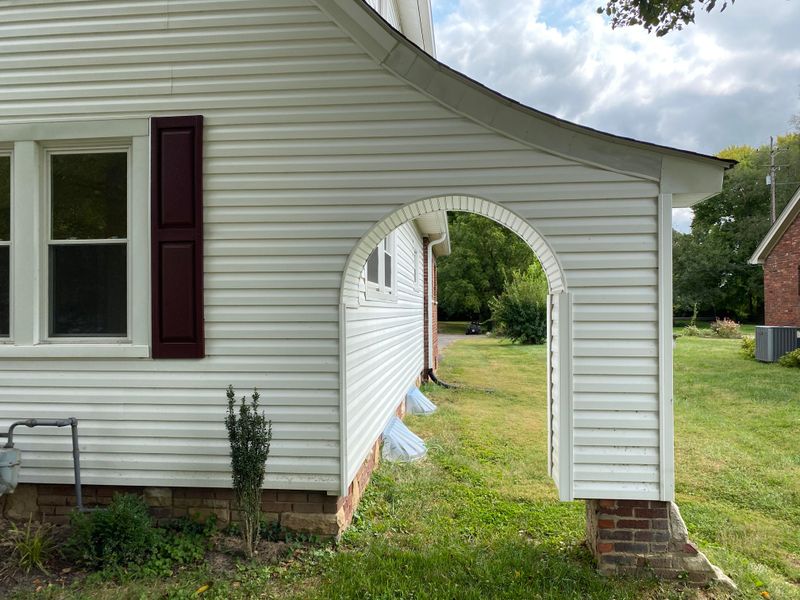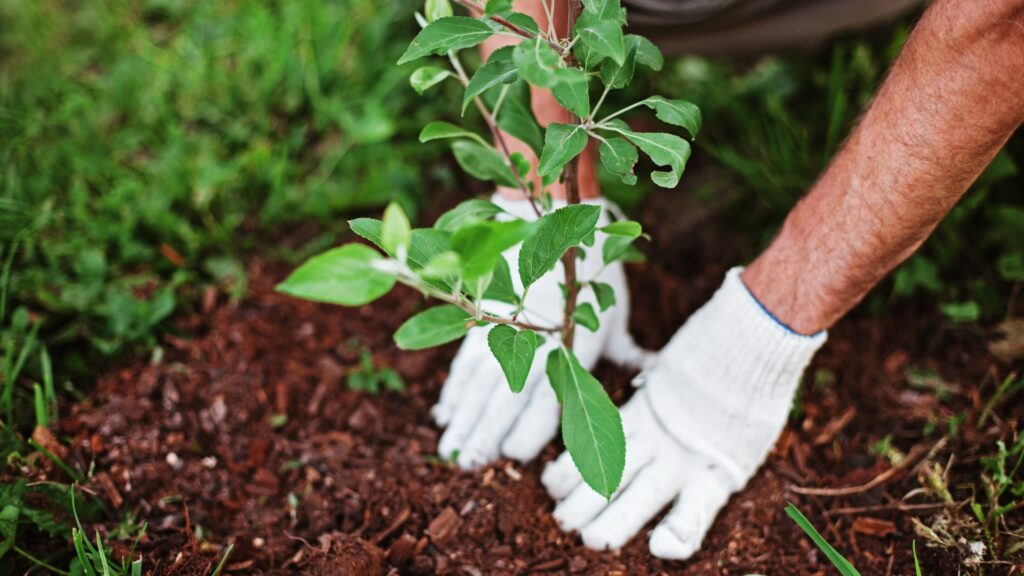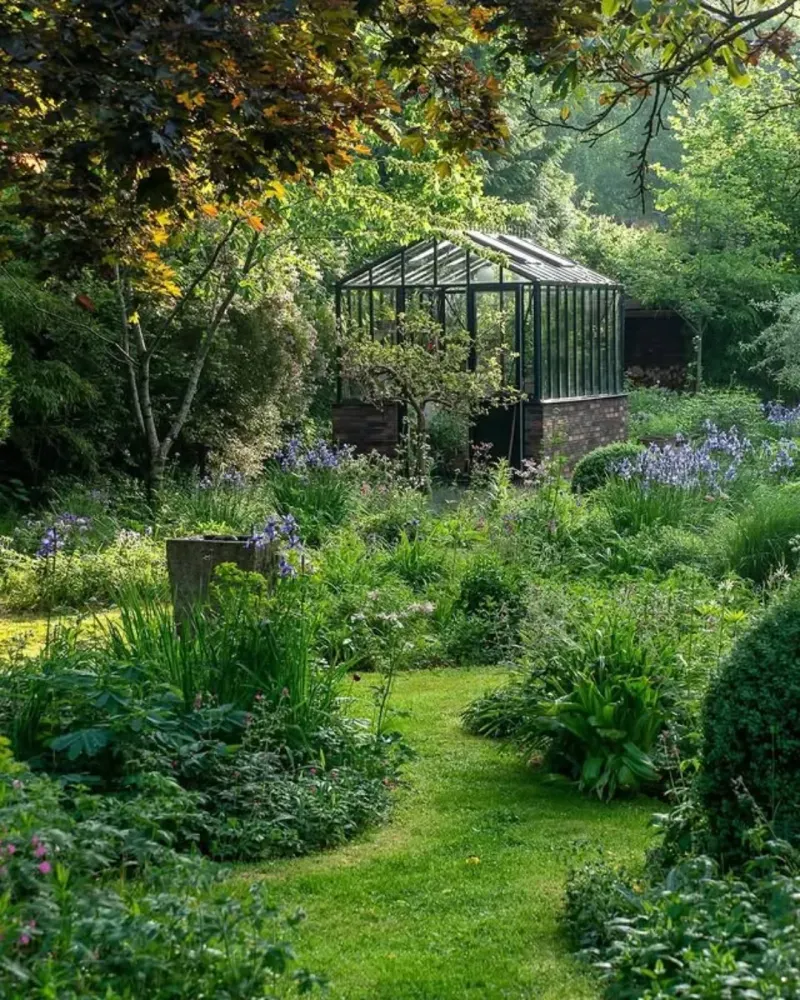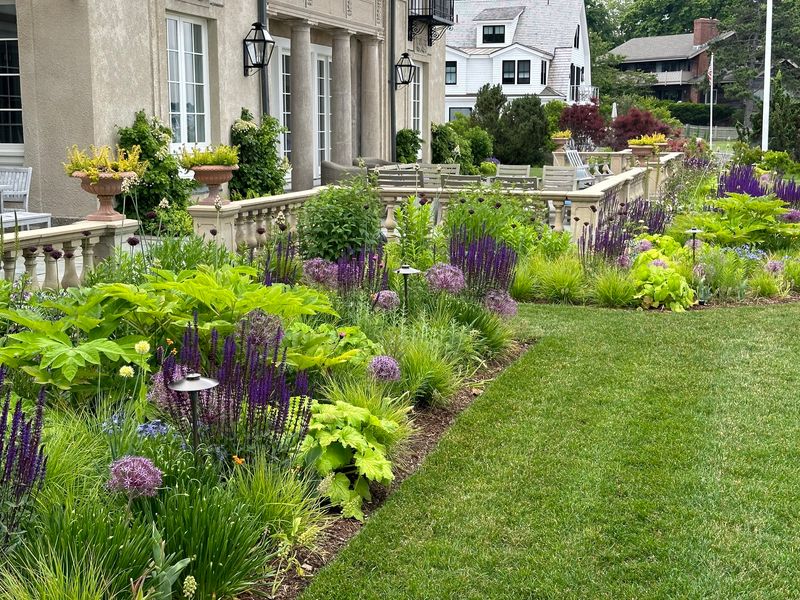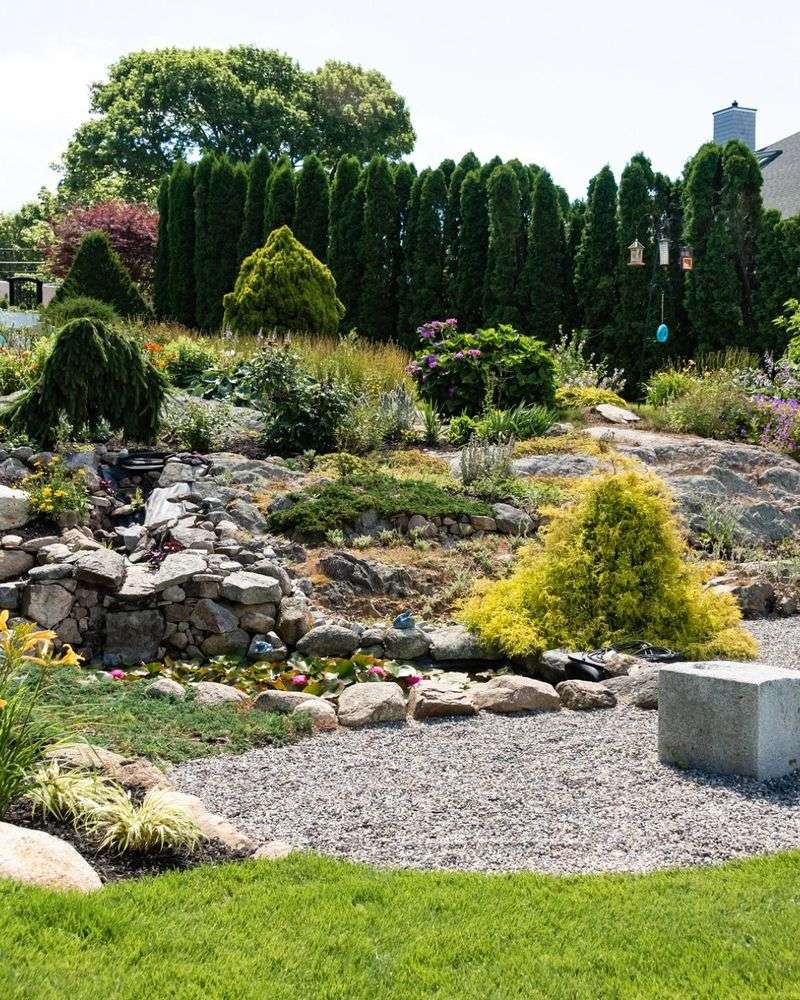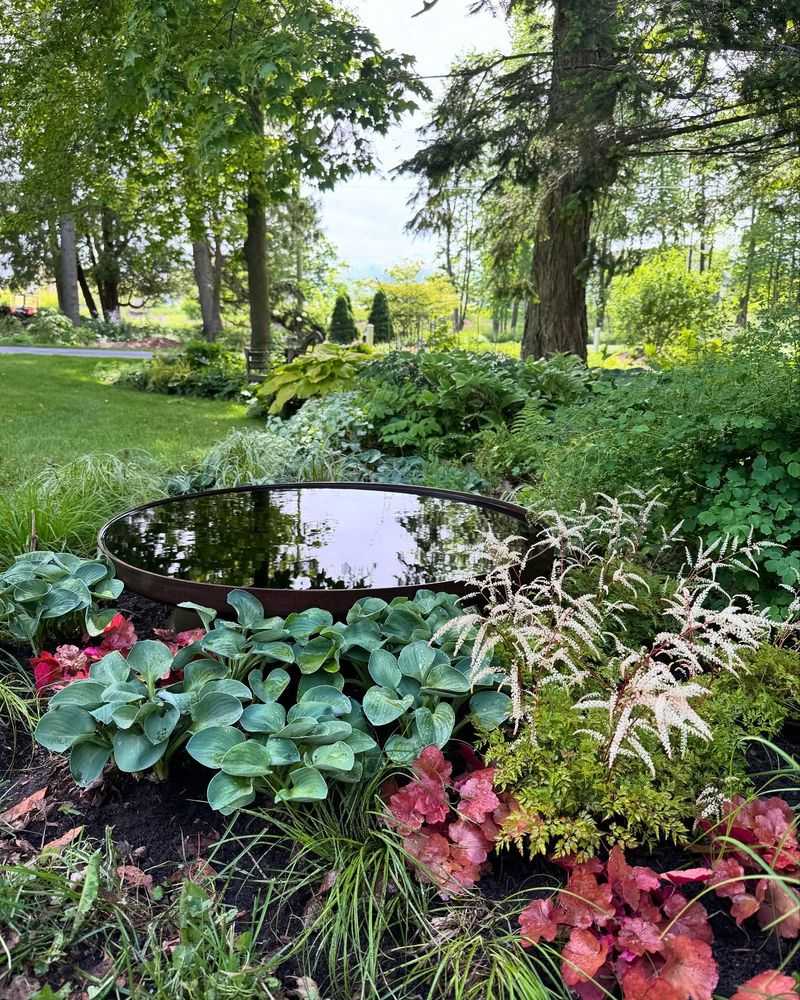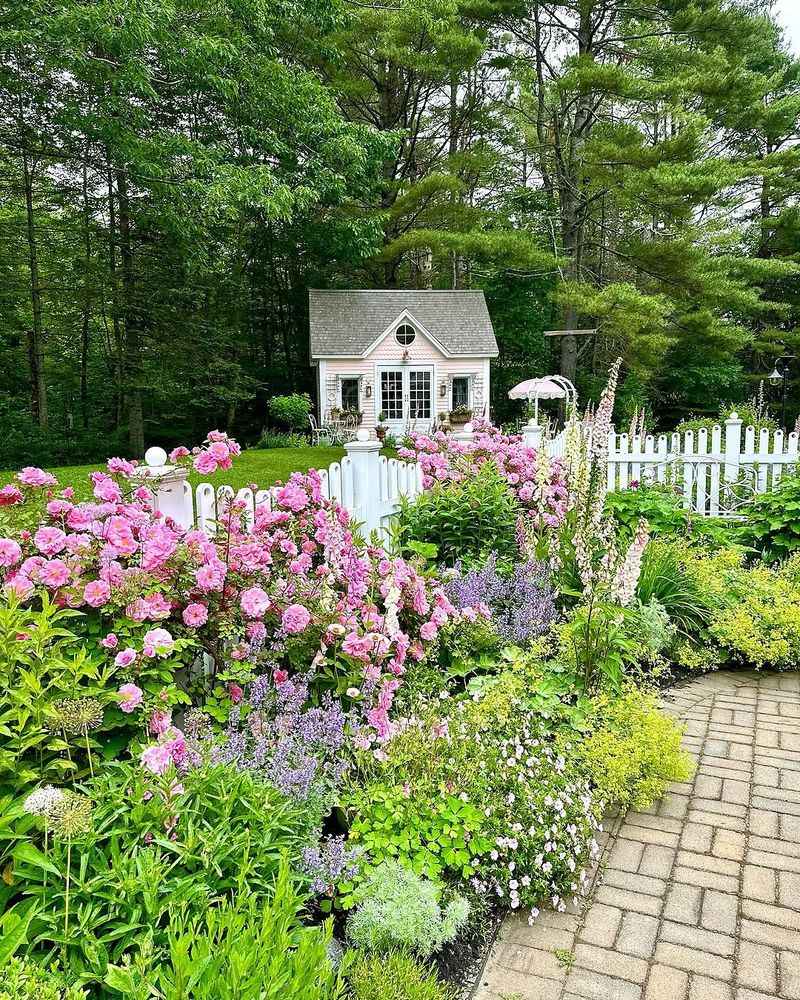Designing a garden should be a walk in the park—but a few sneaky missteps can throw a wrench in the works. From cramped corners to chaotic layouts, these common blunders can turn dream spaces into headaches.
The upside? A few smart tweaks can set things right. I’ve rounded up easy fixes to keep your garden on the right track and blooming with style.
Let’s turn your backyard into your favorite hangout spot—rain or shine!
1. Overlooking Seasonal Interest
Gardens that shine for just one season leave you with months of emptiness. Many gardeners focus entirely on summer blooms, forgetting to include plants that provide winter structure or spring emergence.
Consider adding evergreens, ornamental grasses that look stunning in winter frost, and early spring bulbs. Mix in plants with interesting bark or seed heads that persist through colder months. Your garden should tell a story year-round, not just during prime growing season.
2. Ignoring Mature Plant Sizes
That adorable little shrub won’t stay tiny forever! One of the biggest headaches comes from planting without considering how large plants will eventually grow. The cute 1-gallon perennial might spread to 3 feet wide within a couple of years.
Always check plant tags or research mature dimensions before deciding where to place them. Give adequate spacing between plants based on their full-grown size. What looks sparse initially will fill in beautifully, preventing overcrowding and constant pruning battles later.
3. Creating Tiny, Scattered Beds
Small, isolated flower beds scattered across the lawn create a choppy, disjointed look. They’re also maintenance nightmares, requiring more edging work and making mowing a zigzag obstacle course.
Instead, consider fewer but larger planting areas with bold, sweeping curves. Connect beds to create flowing garden spaces that guide the eye through the landscape. This approach feels more cohesive and professional while actually reducing maintenance time spent on edging and mowing around multiple small islands.
4. Forgetting About Maintenance Access
Beautiful garden designs can quickly become frustrating when you realize you can’t reach the back of the bed to weed or prune. Many gardeners create deep borders without considering how they’ll maintain plants that aren’t accessible from the edges.
Always include stepping stones, hidden paths, or maintenance access points in beds deeper than 3-4 feet. Consider how you’ll reach plants for watering, deadheading, and seasonal care. Smart access planning means you’ll actually enjoy maintaining your garden rather than struggling to reach overgrown areas.
5. Planting Without a Color Scheme
Random color combinations can make a garden look chaotic rather than harmonious. When every plant is chosen independently without considering how colors work together, the result often resembles a jumbled rainbow rather than a cohesive design.
Try limiting your palette to 3-4 complementary colors that repeat throughout the garden. Consider using color theory basics – analogous colors for harmony or complementary colors for drama. Even simple white flowers with varied greens can create an elegant, sophisticated garden that feels intentionally designed.
6. Neglecting Proper Scale and Proportion
Tiny ornaments lost in vast spaces or oversized features dominating small gardens create uncomfortable visual tension. Scale mistakes happen when elements don’t relate properly to each other or to the overall space.
Match the size of features to your garden’s dimensions. A small patio needs appropriately sized containers, while expansive landscapes require larger focal points to avoid looking diminutive. Group smaller items together to create visual weight, and ensure architectural elements like pergolas or arbors suit your garden’s proportions.
7. Overlooking Four-Season Structure
Gardens that collapse into formless blobs after frost reveal a common design flaw: lack of permanent structure. Without evergreens or architectural elements, winter gardens disappear under snow or become depressing views of bare soil.
Incorporate a backbone of evergreen shrubs, ornamental trees with interesting branching patterns, and hardscape elements like stone walls or arbors. Add plants with winter interest such as red-twig dogwoods or ornamental grasses that hold their form. These elements maintain your garden’s structure even when perennials die back.
8. Creating High-Maintenance Designs
Elaborate gardens requiring constant attention often lead to frustration and eventual neglect. Complex designs with high-maintenance plants, intricate edging, or plants that need frequent division look stunning initially but become burdens over time.
Be honest about your maintenance bandwidth before finalizing your design. Choose lower-maintenance plants suited to your climate and group them by water needs. Incorporate mulched beds to reduce weeding, and select long-lived perennials that don’t need frequent division. Your future self will thank you for a garden that’s beautiful without being demanding.
9. Forgetting About Pathways and Flow
Gardens without clear circulation patterns feel disorganized and uninviting. When visitors don’t intuitively understand how to move through a space, they miss experiencing the garden as intended.
Create obvious pathways that lead people through your garden in a logical sequence. Consider desire lines – where people naturally want to walk. Make primary paths wide enough for two people to walk side by side (minimum 4 feet), and ensure paths connect key areas like patios, seating areas, and garden focal points.
10. Ignoring Your Home’s Architecture
Gardens that clash with your home’s style create visual discord rather than harmony. A formal, symmetrical garden looks awkward against a rustic cottage, while a wildflower meadow might feel out of place with a sleek contemporary home.
Take cues from your home’s architectural style, materials, and proportions. Consider line, form, and texture that complement your house. This doesn’t mean your garden must be slavishly matched to your home, but it should engage in a visual conversation with the architecture for a cohesive overall impression.
11. Ignoring Microclimates in Your Yard
Treating your garden as one uniform space can lead to poor plant performance and frustrating results. Many gardeners forget that even small yards have microclimates – areas that differ in sun exposure, wind, moisture, and temperature due to fences, slopes, buildings, or trees.
Pay attention to how light moves through your space during the day, which areas stay damp after rain, and where frost lingers longest. Group plants according to their preferred conditions, placing sun-lovers in the brightest spots and moisture-sensitive varieties where drainage is best. Designing with microclimates in mind ensures healthier plants and a garden that thrives across its diverse pockets.
12. Create a Strong Focal Point
Gardens without focal points lack direction and purpose. Your eye wanders without settling anywhere specific, creating a sense of restlessness rather than the tranquility most gardeners desire.
Establish at least one compelling focal point that draws attention – perhaps a specimen tree, water feature, or garden sculpture. Position it where it’s naturally viewed from key vantage points like windows or seating areas. Secondary focal points can guide visitors through larger gardens, creating a journey of discovery with rewarding destinations.
13. Use Repetition for Cohesion
Gardens filled with one-of-everything often feel like plant collections rather than designed spaces. Without repeating elements, the eye jumps from item to item without finding visual rest or coherence.
Repeat key plants, colors, or materials throughout your garden to create rhythm and unity. This doesn’t mean boring duplication – vary the groupings while maintaining recognizable elements. Try using the same plant in different locations or repeating a signature color through different plant varieties for a garden that feels intentionally designed.
14. Design in Layers
Flat, one-dimensional gardens lack the rich complexity that makes spaces engaging. When all plants are roughly the same height, the garden misses opportunities for drama and discovery.
Think vertically by designing in layers – ground covers, mid-height perennials, shrubs, and trees. Create depth by placing taller plants toward the back of borders (or center of island beds) with shorter plants in front. This approach maximizes your space and creates that lush, abundant feeling that makes gardens feel like immersive experiences.
15. Embrace Negative Space
Overcrowded gardens without breathing room feel chaotic and stressful. Many gardeners fill every inch with plants, creating visual overload that prevents any single element from standing out.
Incorporate deliberate empty spaces – lawn areas, patios, or simple groundcover expanses. These “negative spaces” give the eye places to rest and help highlight your garden’s best features. Think of empty space as the frame around a beautiful picture, defining and enhancing what it surrounds.
16. Plan for Privacy and Views
Overlooked gardens feel exposed and uncomfortable. Many designs fail to screen unsightly views or create private retreats where people actually want to linger.
Strategically place trees, tall shrubs, or structures to block unwanted sightlines while framing pleasant views. Create “garden rooms” with varying degrees of enclosure for different activities and moods. Remember that privacy doesn’t require solid barriers – filtered screens through grasses or airy shrubs often provide sufficient separation while maintaining light and air flow.

